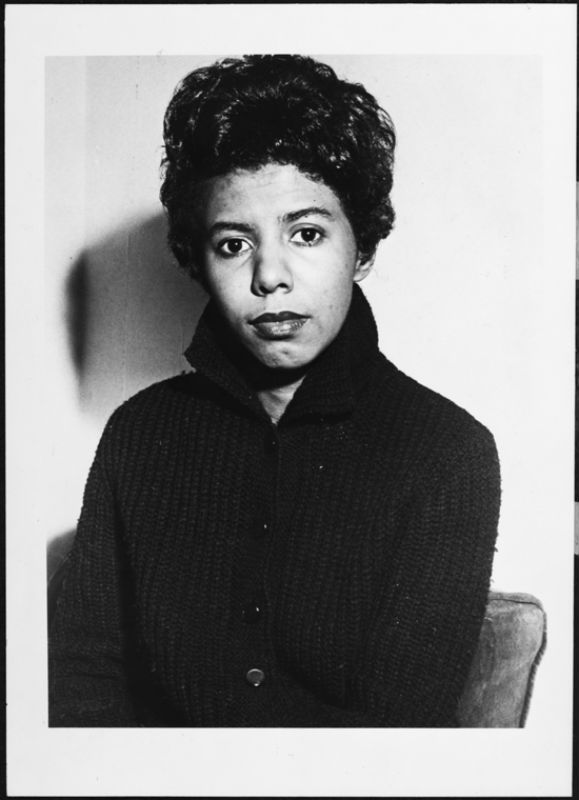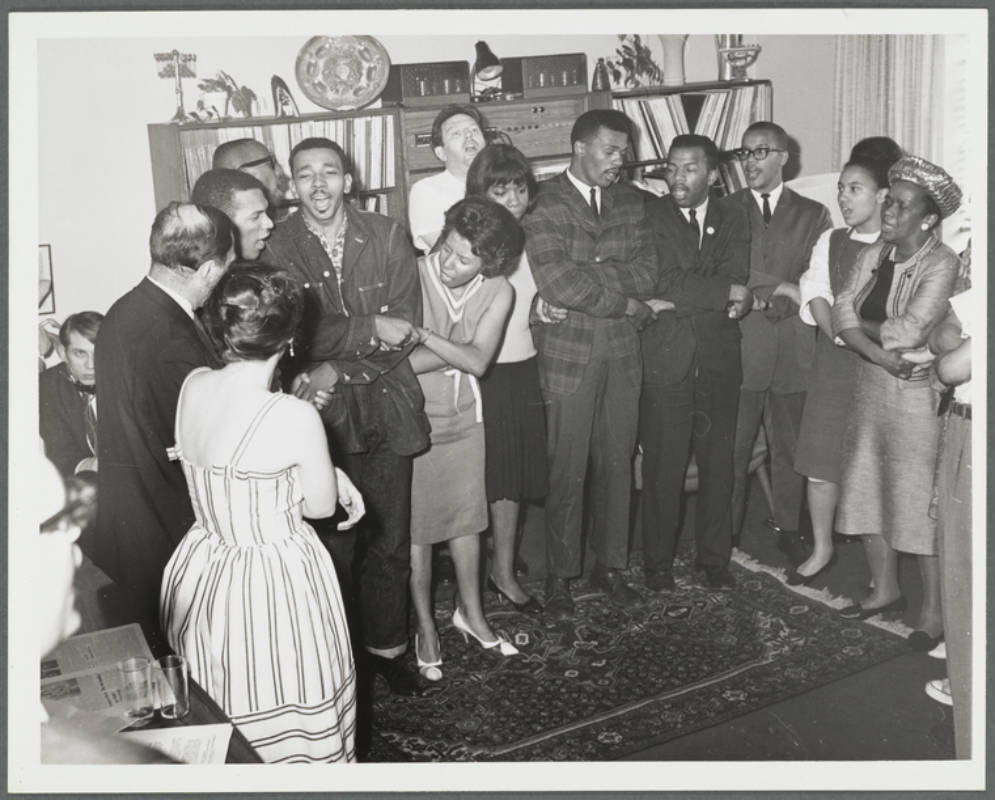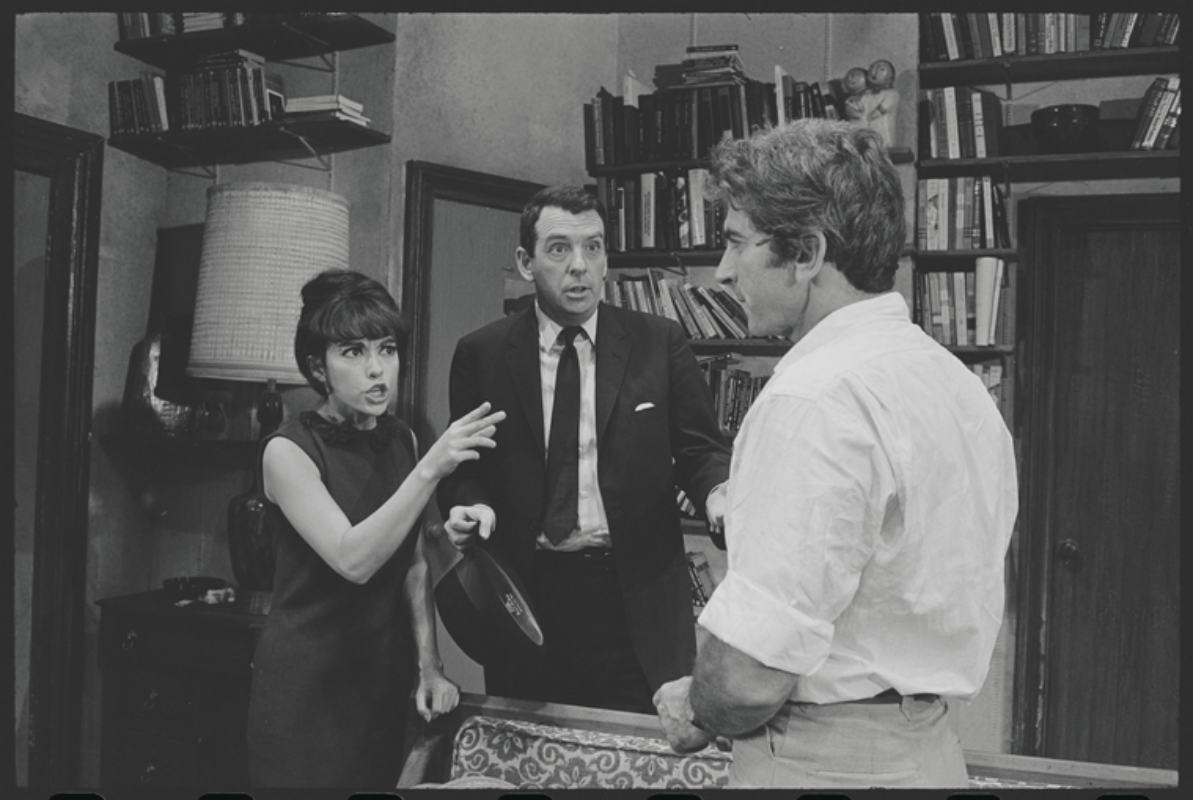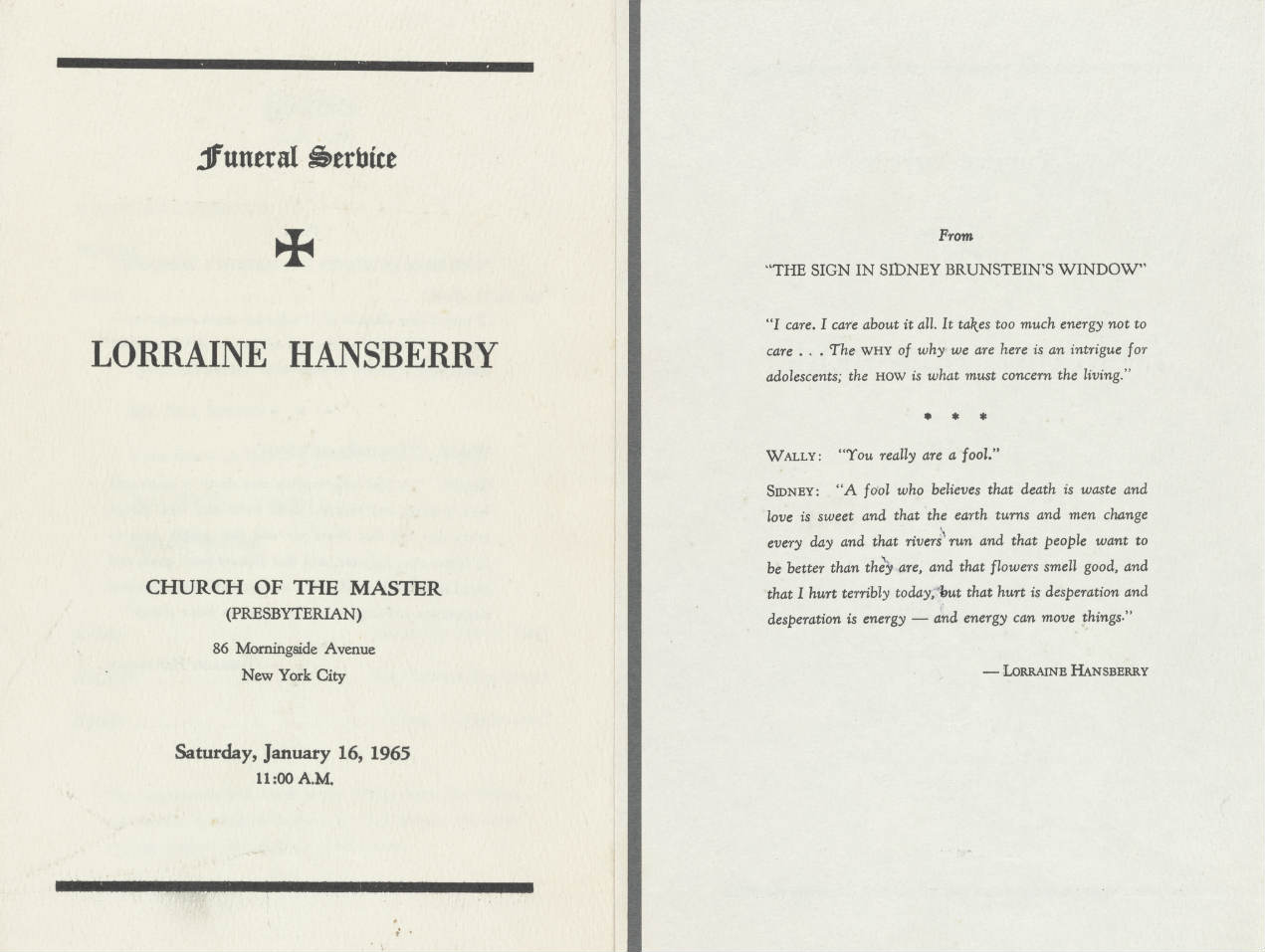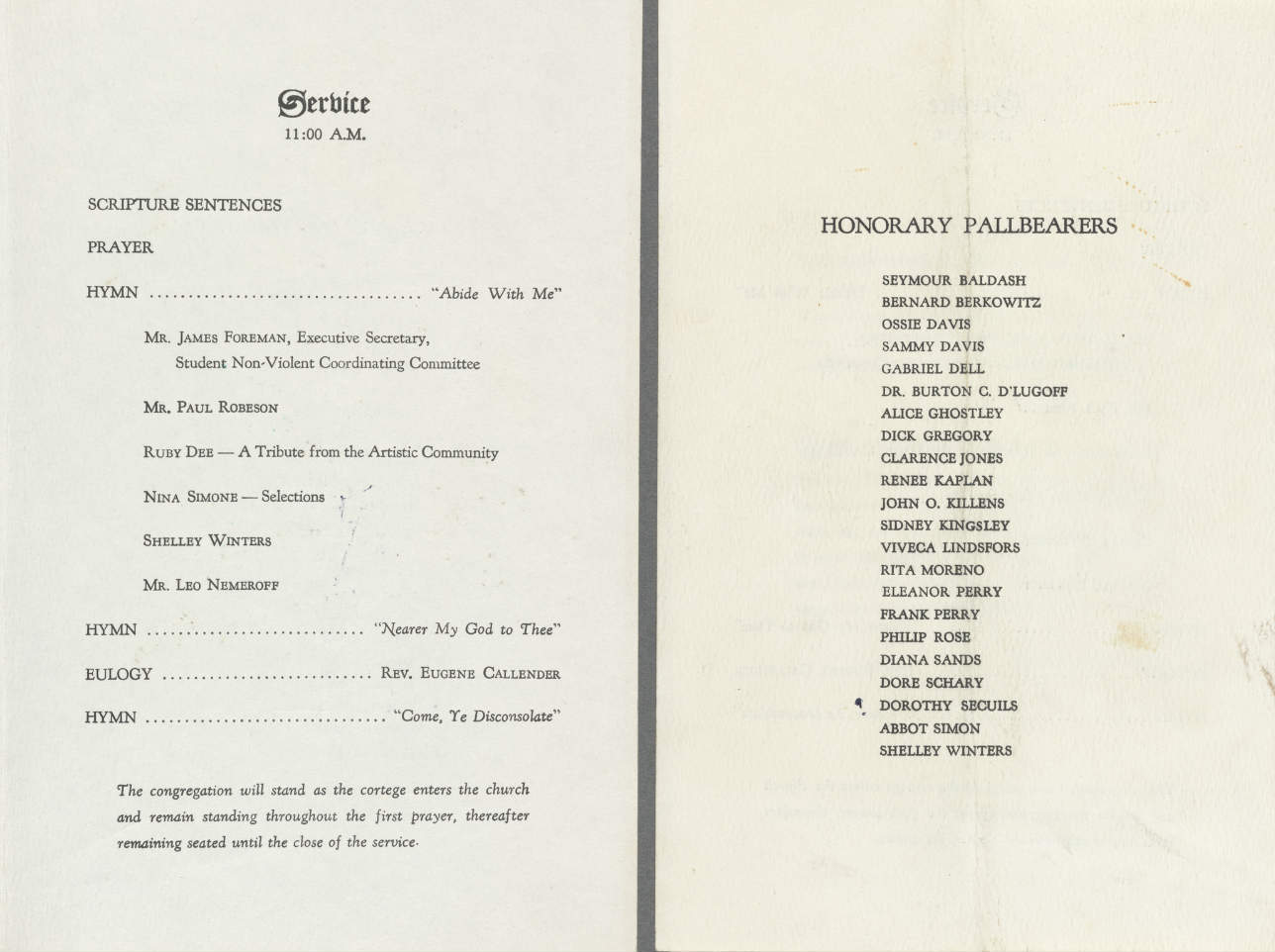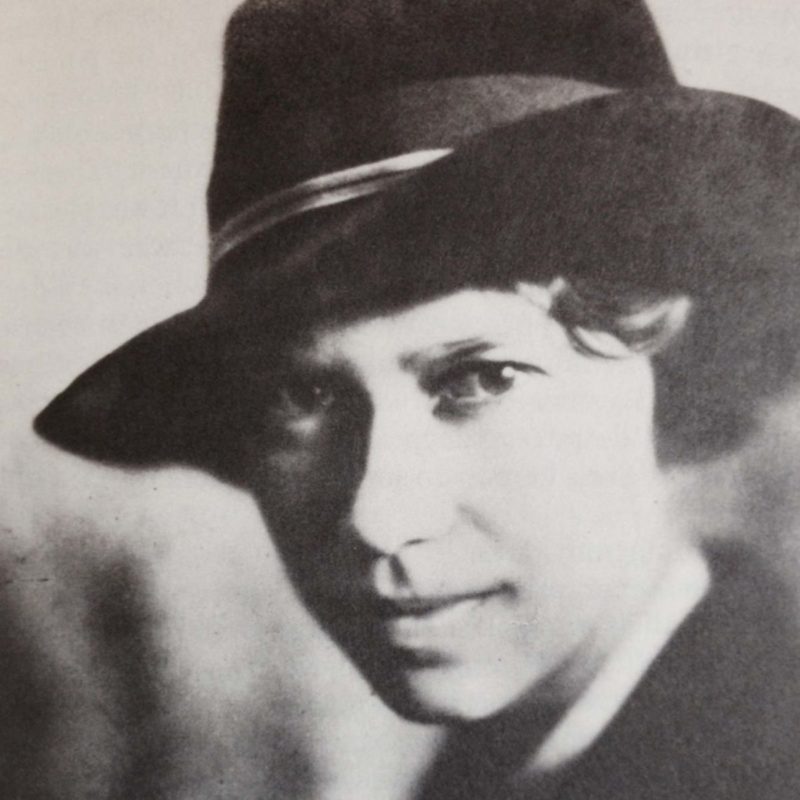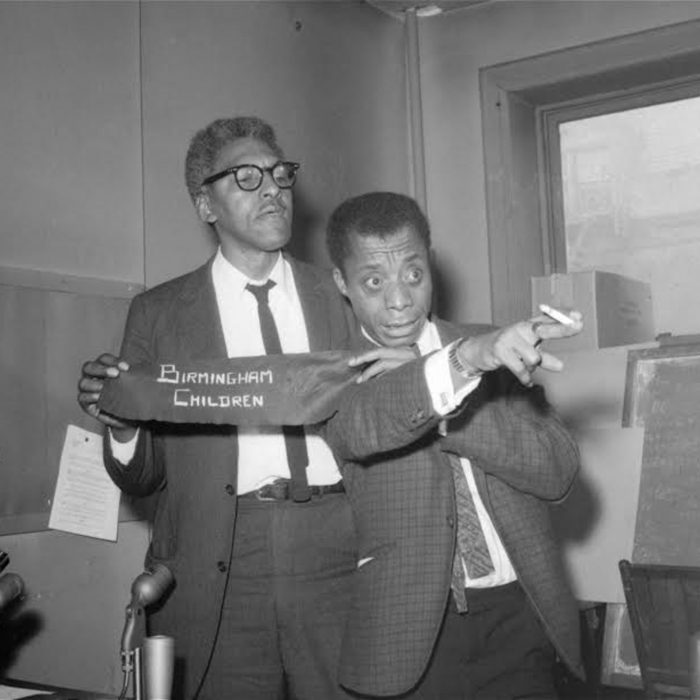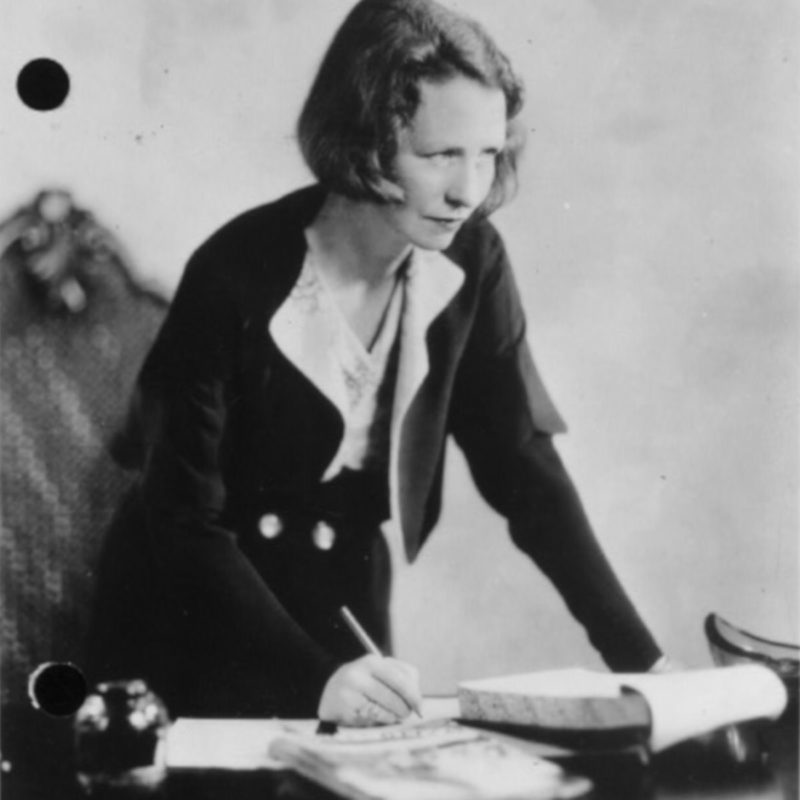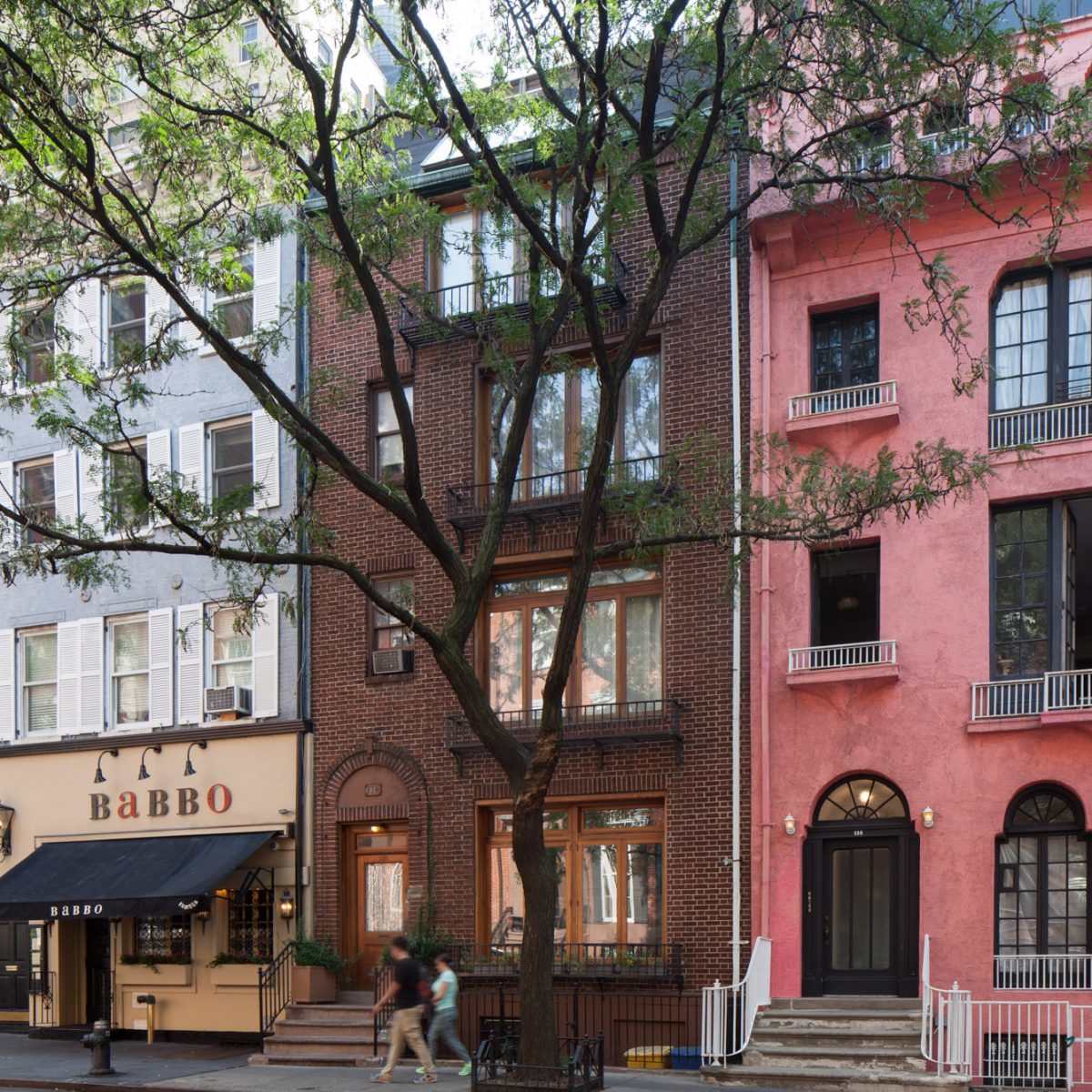
Lorraine Hansberry Residence
overview
In 1960, playwright Lorraine Hansberry bought this building with money earned from her award-winning play, A Raisin in the Sun (1959).
Remaining active in the civil rights movement, Hansberry began a relationship with Dorothy Secules, a tenant, and the two remained together until Hansberry’s premature death from cancer in January 1965.
History
With proceeds earned from her hit Broadway play A Raisin in the Sun (1959), playwright and activist Lorraine Hansberry (1930-1965) bought this residential building, a half block from Washington Square Park, in 1960. Though she and her husband Robert Nemiroff had separated in 1957 while they lived in an apartment at 337 Bleecker Street, he remained a close friend and suggested that the Waverly Place building would be a good investment.
Hansberry lived on the top floor. She soon became involved with one of the building’s tenants, Dorothy Secules, a white woman who had lived here since the 1930s and shared Hansberry’s interest in politics. (In a list of “likes,” Hansberry notes an affection for Secules’s eyes; in other writings, she refers to her as “D.S.”) Director Miranda D’Ancona later recalled times she and her girlfriend spent with Hansberry and Secules:
We went to plays and things. The four of us would have grand times–I remember Lorraine lined us up, all three of us, she in front, to teach us [the latest dance]. We all collapsed laughing; it turned into total silliness.
Hansberry had a number of lesbian relationships in the late 1950s. However, it appears that her relationship with Secules lasted the longest, as the two remained together until Hansberry’s premature death from pancreatic cancer in January 1965. Secules helped care for Hansberry as she battled cancer and worked on her second Broadway play, The Sign in Sidney Brustein’s Window (1964), which included a gay character. A few years earlier, she wrote an unpublished essay entitled “On Homophobia, the ‘Intellectual Impoverishment of Women’ and a Homosexual ‘Bill of Rights’” (1961).
During her years on Waverly Place, Hansberry remained active in the civil rights movement. On May 24, 1963, she took part in the historic James Baldwin-Robert F. Kennedy meeting, at which a group of civil rights activists met with the then-Attorney General to discuss race relations in the United States. The meeting was held at a Kennedy family apartment at 24 Central Park South. A year later, on June 15, 1964, Hansberry gave a famous speech at “The Black Revolution and the White Backlash” Forum at The Town Hall, 123 West 43rd Street, which was sponsored by The Association of Artists for Freedom. She was also celebrated for her book The Movement: Documentary of a Struggle for Equality (1964).
Hansberry’s funeral was held at the Church of the Master (since demolished for a new church) in Harlem. Secules, who was left $1,000 in Hansberry’s will, was an honorary pallbearer, as was close friend and former girlfriend Renee Kaplan. Hansberry’s papers are now part of the Schomburg Center for Research in Black Culture.
Entry by Amanda Davis, project manager (March 2017; last revised March 2018).
NOTE: Names above in bold indicate LGBT people.
Building Information
- Architect or Builder: Adolph E. Nast
- Year Built: 1916
Sources
Christopher D. Brazee, Gale Harris, and Jay Shockley, “150 Years of LGBT History,” New York City Landmarks Preservation Commission (June 2014).
Daniel Hurewitz, Stepping Out: Nine Walks Through New York City’s Gay and Lesbian Past (New York: Henry Holt & Co., 1997).
Elise Harris, “The Double Life of Lorraine Hansberry,” Out, September 1999, 3.
Do you have more information about this site?
This project is enriched by your participation! Do you have your own images of this site? Or a story to share? Would you like to suggest a different historic site?
